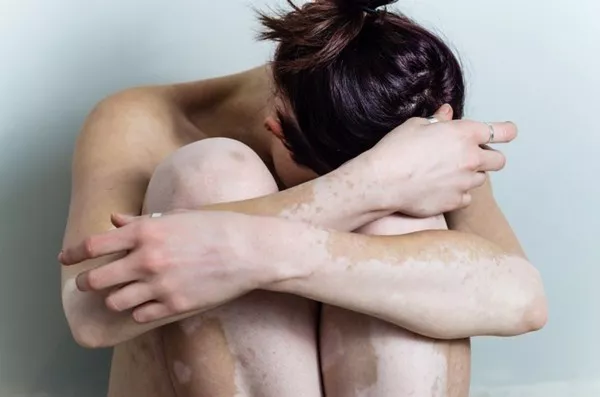Vitiligo vulgaris is a chronic skin condition characterized by the development of depigmented, or white, patches on the skin due to the loss of melanocytes, the cells responsible for producing pigment. This condition affects individuals of all ethnic backgrounds, genders, and ages, and its impact extends beyond the physical to emotional and social aspects of life. In this comprehensive guide, we delve into the causes, symptoms, diagnosis, and treatment options available for vitiligo vulgaris.
What Causes Vitiligo Vulgaris?
The exact cause of vitiligo vulgaris remains unclear, but several theories have been proposed by researchers. One prominent hypothesis is that it results from an autoimmune process where the body’s immune system mistakenly targets and destroys its own melanocytes. This autoimmune response can be triggered by genetic factors, environmental influences, or a combination of both. Research suggests that certain genetic variations can predispose individuals to developing vitiligo vulgaris, although not everyone with these genetic markers will develop the condition.
Other potential causes include oxidative stress, neural factors, and biochemical imbalances within the skin. Oxidative stress, caused by an imbalance between antioxidants and free radicals, may contribute to the destruction of melanocytes. Neural factors, such as neurotransmitters and neuropeptides, could also play a role in disrupting melanocyte function. Furthermore, biochemical changes affecting melanocyte survival and function are being investigated as potential contributors to the development of vitiligo vulgaris.
Signs and Symptoms of Vitiligo Vulgaris
The hallmark sign of vitiligo vulgaris is the appearance of white patches on the skin. These patches typically appear symmetrically on sun-exposed areas of the body, such as the face, hands, arms, feet, and areas around body openings (like the eyes, nostrils, and mouth). The borders of these patches can be well-defined or irregular and may expand over time. Vitiligo can also affect other areas of the body, including the genitals, armpits, and inside the mouth.
In addition to depigmented patches, individuals with vitiligo vulgaris may experience other skin changes. These can include premature graying or whitening of hair on the scalp, eyebrows, eyelashes, and beard. Some patients may notice a loss of pigment in the mucous membranes of the mouth and nose, leading to lighter pink or white patches in these areas. While vitiligo itself is not painful, the emotional impact of the condition can be significant due to its effect on appearance.
Diagnosis and Evaluation
The diagnosis of vitiligo vulgaris is primarily clinical, based on the characteristic appearance of depigmented patches on the skin. Dermatologists may use a Wood’s lamp, which emits ultraviolet light, to examine the affected areas more closely. Under this lamp, vitiligo patches may appear more clearly due to the contrast between normal and depigmented skin.
In some cases, a skin biopsy may be performed to confirm the diagnosis and rule out other conditions that can cause depigmentation. Blood tests may also be conducted to assess thyroid function and evaluate for autoimmune disorders that are associated with vitiligo, such as thyroid disease or diabetes.
Treatment Options for Vitiligo Vulgaris
While there is no definitive cure for vitiligo vulgaris, several treatment options are available to help manage the condition and improve cosmetic appearance. Treatment plans are often tailored to the individual based on the extent and location of depigmented patches, as well as the patient’s preferences.
1. Topical Therapies: Corticosteroid creams, calcineurin inhibitors, and vitamin D analogs are commonly used to help repigment affected areas of the skin. These medications work by suppressing the immune response and stimulating melanocyte activity.
2. Phototherapy: Ultraviolet light therapy, either with narrowband UVB or PUVA (psoralen combined with UVA), can be effective in stimulating repigmentation of vitiligo patches. Phototherapy is often used in combination with topical treatments for optimal results.
3. Surgical Interventions: In cases where other treatments have not been successful, surgical options such as skin grafting, melanocyte transplantation, or micropigmentation (tattooing) may be considered. These procedures aim to transfer melanocytes or pigment to depigmented areas of the skin.
4. Supportive Therapies: Counseling and support groups can be valuable for individuals living with vitiligo vulgaris. These resources provide emotional support and help patients cope with the social and psychological impacts of the condition.
Living with Vitiligo Vulgaris
Vitiligo vulgaris is a chronic condition that requires ongoing management and support. While treatment options can help improve the appearance of depigmented patches, the emotional impact of vitiligo should not be overlooked. Many individuals with vitiligo experience feelings of self-consciousness, anxiety, and depression due to changes in their appearance.
It’s essential for individuals with vitiligo vulgaris to seek support from dermatologists, counselors, and support groups to address both the physical and emotional aspects of living with this condition. Education about vitiligo and its treatment options can empower patients to make informed decisions and actively participate in their care.
Conclusion
Vitiligo vulgaris is a complex skin disorder characterized by the loss of melanocytes and the development of depigmented patches on the skin. While the exact cause remains elusive, ongoing research is shedding light on the underlying mechanisms of this condition. Advances in treatment options, including topical therapies, phototherapy, and surgical interventions, offer hope to individuals living with vitiligo vulgaris.
Beyond medical interventions, support from healthcare providers, counselors, and peer groups is crucial in helping patients navigate the challenges associated with vitiligo. By raising awareness and fostering a supportive environment, we can empower individuals with vitiligo to embrace their uniqueness and thrive despite the challenges posed by this condition.
Related Topics:


























